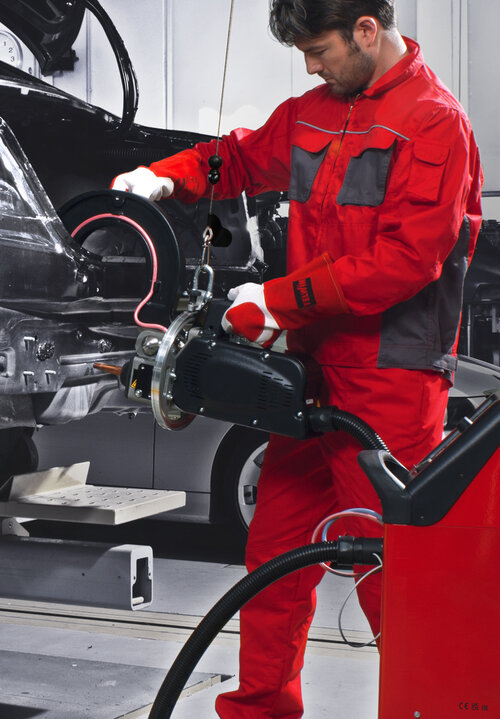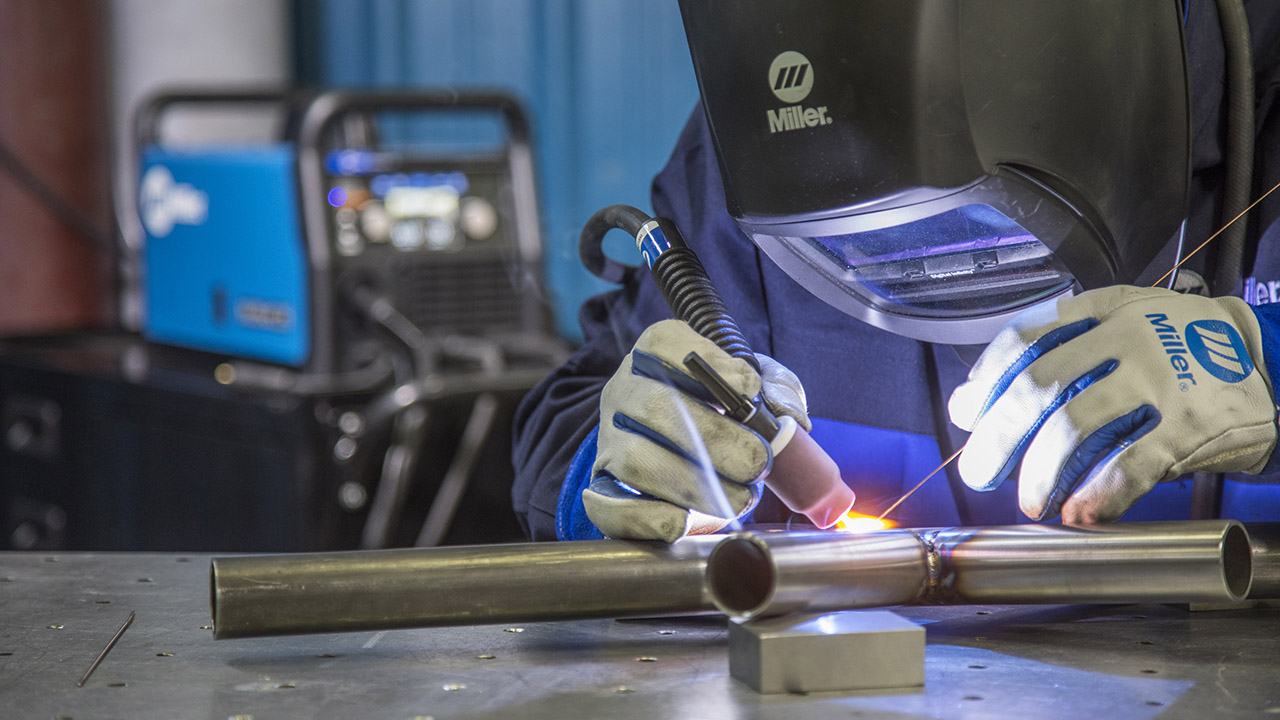Top-rated weld defect solutions from Montana Mobile Welding and Repair Belgrade Welding
Typical Welding Repair Service Issues and Exactly How to Address Them Efficiently
Welding repair services typically encounter a variety of issues that can endanger the honesty of the end product. Typical issues consist of poor infiltration, porosity, and imbalance, among others. Each problem presents one-of-a-kind obstacles that call for details methods for resolution. Understanding these concerns is essential for welders aiming to enhance their results and skills. This conversation will certainly explore these usual welding repair service concerns and efficient methods to address them.
Inadequate Penetration
Poor penetration happens when the weld metal stops working to totally fuse with the base product, causing weak joints and prospective structural failures. This problem frequently comes from not enough warmth input, wrong electrode angle, or inappropriate welding speed. Welders may encounter poor infiltration due to a mistake of the essential criteria for a particular material thickness or type. In addition, contamination on the base product's surface can impede reliable bonding, aggravating the trouble. To address inadequate penetration, welders ought to ensure appropriate setups on their devices and preserve a tidy job surface area. Routine evaluation of welds is advised to determine any deficiencies early, allowing for timely improvements and the prevention of jeopardized structural honesty in welded settings up.
Porosity
Porosity is a typical flaw in bonded joints that materializes as little gas bubbles caught within the weld metal. This defect can endanger the honesty of the weld, bring about minimized stamina and potential failure under stress. Montana Mobile Welding and Repair Fabrication. Porosity typically arises from contamination, moisture, or incorrect welding techniques, which permit gases to get away right into the liquified weld pool. To attend to porosity, welders must ensure appropriate surface area preparation, maintain a clean workplace, and use ideal welding parameters. Additionally, picking the appropriate filler product and securing gas can mitigate gas entrapment. Normal inspection and screening of welds can aid determine porosity early, ensuring timely restorative actions are taken, consequently maintaining the high quality and reliability of the bonded framework
Misalignment
Imbalance in welding can arise from numerous variables, consisting of improper setup and thermal development. Understanding the origin triggers is important for efficient resolution. Numerous improvement techniques are readily available to straighten elements and guarantee architectural honesty.
Sources of Imbalance
Welding misalignment commonly stems from a selection of underlying issues that can jeopardize architectural stability. One key reason is inappropriate fit-up of parts prior to welding, which can result in gaps and unequal surface areas. Variations in thermal expansion throughout the welding process can likewise cause distortion, specifically if the materials being joined have different coefficients of growth. Additionally, inadequate fixturing and securing may fail to hold components safely in position, resulting in motion during welding. Inadequately kept devices, including welding makers and devices, may introduce disparities in the weld bead, more adding to imbalance. Lastly, operator mistake, stemming from insufficient training or experience, can additionally play a significant function in producing misaligned welds.
Correction Strategies Readily Available
Resolving imbalance efficiently needs a mix of corrective techniques tailored to the specific concerns available. One common method is making use of components or jigs to hold elements in the proper position during welding, guaranteeing constant alignment. Additionally, preheating the products can aid minimize distortion and boost fit-up. For substantial imbalance, mechanical adjustment strategies, such as making use of hydraulic jacks or clamps, can be utilized to correct the position prior to welding. Post-weld warm treatment may also be essential to relieve anxieties triggered by imbalance. Ultimately, cautious examination and modification during the arrangement stage can prevent imbalance issues from coming to be considerable troubles, promoting a smoother welding procedure and boosting total structural honesty.
Distortion
Distortion is a typical challenge in welding that can occur from different factors, consisting of irregular heating & cooling. Understanding the root causes of distortion is vital for carrying out effective avoidance methods. Addressing this problem not just boosts architectural honesty however additionally boosts the total quality of the weld.
Root causes of Distortion
When based on the intense warmth of welding, products commonly go through modifications that can result in distortion. This sensation mostly develops from thermal development and contraction during the welding process. As the weld area warms up, the material expands; upon air conditioning, it gets, which can develop inner anxieties. Additionally, unequal heating across a work surface can aggravate these stress and anxieties, causing bending or flexing. The sort of product additionally plays a considerable function; steels with differing thermal conductivity and coefficients of development might respond in different ways, causing unforeseeable distortions. Inadequate joint layout and insufficient fixturing can contribute to misalignment during welding, enhancing the likelihood of distortion. Understanding these reasons is important for effective welding fixing and avoidance strategies.
Avoidance Techniques
Reliable prevention techniques for distortion during welding concentrate on managing heat input and making sure proper joint layout. Preserving a regular warm input aids to reduce thermal expansion and tightening, which can bring about distortion. Utilizing strategies such as preheating the work surface can also decrease the temperature level slope, promoting consistent heating. In addition, choosing appropriate joint layouts, such as T-joints or lap joints, can enhance security and lower anxiety focus. Carrying out correct fixturing to safeguard the workpieces in position additionally aids in keeping alignment during the welding procedure. Lastly, staggered welding series can distribute warmth a lot more uniformly, stopping local distortion. By applying these strategies, welders can significantly decrease the likelihood of distortion and boost the total quality of their welds.
Fracturing
Cracking is an usual issue run into in welding repair work, often arising from different variables such as incorrect cooling rates, product selection, or poor joint prep work. The incident of cracks can substantially compromise the honesty of the weld, bring about prospective failures during procedure. To address this problem, welders must initially examine the source, making sure that materials are suitable and appropriately selected for the particular application. In addition, controlling the air conditioning rate throughout the welding process is crucial; quick air conditioning can generate stress and anxiety and result in breaking. Appropriate joint layout and preparation likewise add to lessening the threat. Implementing these methods can improve weld top quality and durability, inevitably reducing the probability blog here of splitting in finished weldments.

Insufficient Blend
A significant issue in welding repair services is incomplete blend, which takes place when the weld steel does not effectively bond with the base material or previous weld passes - Montana Mobile Welding and Repair Belgrade Welding. This defect can cause weak points in the joint, possibly jeopardizing the integrity of the welded structure. Aspects adding to insufficient blend consist of insufficient heat input, improper welding strategy, and contamination of the surface areas being joined. To address this concern successfully, welders should guarantee appropriate pre-weld cleaning and surface preparation, in addition to adjust their welding specifications to attain adequate infiltration and fusion. Regular evaluation throughout the welding process can also aid determine insufficient fusion early, allowing for prompt rehabilitative procedures to improve the overall high quality of the weld
Overheating
While welding fixings can improve architectural integrity, overheating offers a significant obstacle that can lead to material destruction. Excessive warm during welding can alter the mechanical homes of metals, resulting in reduced toughness, raised brittleness, and warping. This phenomenon is specifically vital in high-stress applications where structural integrity is critical. Determining getting too hot can involve aesthetic inspections for staining or distortion, along with monitoring temperature level throughout the welding process. To reduce the risks connected with getting too hot, welders should use proper strategies, such as regulating warm input, changing traveling rate, and using appropriate filler products. In addition, implementing pre- and post-weld warm treatments can assist restore material residential properties and improve the general high quality of the repair, guaranteeing long-lasting performance and safety.
Frequently Asked Inquiries
What Are the Typical Signs of a Welding Problem?

Just How Can I Test My Welds for Top quality?
To evaluate welds for top quality, one can utilize aesthetic evaluations, ultrasonic testing, and radiographic methods. Each technique guarantees structural honesty, identifies problems, and validates adherence to defined criteria, ultimately improving the reliability of the why not try these out bonded joints.
What Safety and security Safety Measures Should I Take While Welding?
When welding, one ought to prioritize safety and security by using proper individual safety tools, making certain appropriate ventilation, safeguarding combustible materials away, keeping a clean work space, and recognizing environments to stop injuries and accidents.
Can I Fix a Weld Without Redoing the Entire Joint?
Fixing a weld without remodeling the entire joint is possible, relying on the damage (Belgrade Fabrication). Methods such as grinding, including filler product, or utilizing a welding procedure can efficiently attend to specific imperfections while preserving the bordering structure
What Devices Are Important for Reliable Welding Services?
Important devices for reliable welding repair work include a welding device, cord brush, grinder, protective equipment, clamps, and filler materials. Each device plays a vital role in making sure top quality and safety and security throughout the repair procedure. great post to read Porosity usually emerges from contamination, moisture, or improper welding techniques, which allow gases to escape into the liquified weld swimming pool. Badly maintained devices, consisting of welding makers and tools, might introduce variances in the weld bead, more adding to misalignment. When subjected to the intense warm of welding, products usually undergo modifications that can lead to distortion. Cracking is a common issue experienced in welding repair services, commonly resulting from numerous aspects such as improper air conditioning prices, product option, or inadequate joint preparation. A considerable problem in welding repair services is insufficient fusion, which occurs when the weld metal does not effectively bond with the base product or previous weld passes.